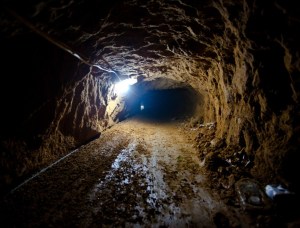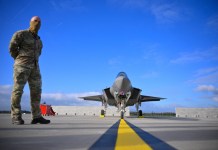After pulverizing swathes of the Gaza Strip in airstrikes, Israel is bracing for a ground attack into the Palestinian enclave. But, the labyrinth of tunnels crisscrossing the besieged territory, which is densely populated with 5,500 inhabitants per square meter, could inflict a heavy cost on Israeli troops.
The Israeli military knows two Gazas — one over the ground and one underneath it. The underground Gaza is not accessible to Israel’s bombs, drones, and satellites. The apprehension remains if Gaza will prove to be a Vietnam for Israel.
The Hamas operatives seem to have taken the leaf out of the Communist Guerrilla troops known as the Viet Cong. During the Vietnam War, these guerrilla fighters had dug tunnels tens of thousands of miles to fight the better-supplied American and South Vietnamese forces.
The extensive network of tunnels ran underneath the Cu Chi district northwest of Saigon. These tunnels were used to house troops, transport communications and supplies, lay booby traps, and mount surprise attacks, after which they could disappear underground to safety.
The tunnels in Gaza had begun for economic reasons to smuggle in consumer goods from Egypt following the Israeli blockade. The blockade was implemented following Hamas’s victory in the 2007 elections. Now, the tunnels are used for launching attacks.
“Nobody knows what’s underground,” CNBC quoted Harel Chorev, a Palestinian historian at Tel Aviv University’s Moshe Dayan Center for Middle East and African Studies. The network of tunnels runs as deep as 30-40 meters, allowing the Hamas operatives to move around freely even as explosives pound the ground. This network is often termed as ‘Gaza Metro.’

The ‘Operation Iron Sword,’ as Israel calls it, could come at a very high cost. Gaza is overcrowded with narrow streets. The Israeli ground troops will be forced to engage in hand-to-hand combat, risking the casualty of Palestinian civilians and Israeli troops.
By Thursday, the Israeli army had bombarded Gaza with approximately 6,000 bombs containing 4,000 tonnes of explosives, according to an army statement.
The death toll in the enclave, home to more than 2 million Palestinians, rose to 1,417, said the Gaza health ministry on Thursday, with 6,268 wounded.
Hecht revealed on Wednesday that military equipment and columns of armored vehicles have been moved to the new frontline, where Israel is building infrastructure for future operations.
Some 360,000 army reservists have been mobilized — the most extensive such compulsory mobilization since the 1973 Yom Kippur War.
Israel’s Wrath
Following the surprise attack by Hamas rockets followed by paragliders, the Israeli government retaliated by immediately cutting water and power supply to Gaza as part of its complete siege on the Hamas-controlled territory.
The launch of ground operations by Israeli forces is expected as the Israel Defense Forces have sent out messages to the denizens of Gaza to evacuate their homes and move towards the south.
Next, “Israel will launch the largest joint (air/sea/land/space) operation against Gaza in history,” John Spencer, an expert at the Modern War Institute at US military academy West Point, predicted on X, formerly Twitter. Spencer, later speaking on how the operations will turn out, said, “It is going to look like hell on earth.”
Such urban fighting will force combatants into hand-to-hand combat, reduce visibility, increase the risk of traps, blur boundaries between civilians and soldiers, and render armored vehicles next to useless.
The advantage Israeli forces have over the American soldiers fighting in Vietnam is that the former has experience conducting ground operations in Gaza and against Hamas. Israel last sent ground forces into Gaza during the fifty-day-long Operation Protective Edge in 2014. In that operation, Israel — which had mobilized seventy-five thousand reservists for it — conducted a joint air, land, and sea campaign to support three IDF divisions that moved into Gaza.
Since then, Hamas has had nearly a decade to bulwark the defenses of Gaza City against the Israeli offensive.
The intelligence gathered by the IDF following the 2021 Operation Guardian of the Wall, during which Israel reportedly destroyed sixty miles of tunnels in Gaza, shows that there are hundreds of tunnels in Gaza.
There is an entire city beneath the ground. Hamas will likely use tunnels offensively to maneuver attackers underground, keeping them both hidden and protected, to conduct surprise attacks, as it did in 2014.
The group will also use them defensively to move between fighting positions to avoid IDF firepower and ground forces.
Using a full spectrum of drones will add to the IDF’s woes — from kamikaze to off-the-shelf quadcopters modified to drop munitions, just like the Ukrainians. Hamas released a video of its forces using drones during its recent attack, showing larger drones in its inventory similar to Iranian ones used by Russian forces in Ukraine.
The recent urban warfare has incorporated drones to a greater extent, which will be a massive challenge for the Israeli ground troops.
“Hamas is known to use civilians as human shields and engage in what scholars have called lawfare, using the law of armed conflict and international humanitarian law –specifically their provisions on the protection of noncombatants — to restrict the actions an attacking military force can take in operations,” Spencer said in an article.
While Hamas has used Palestinian residents of Gaza as human shields, this time, it is likely to use the 150 Israeli noncombatants kidnapped during the initial attacks over the weekend.
Vietnam’s Tunnel Warfare
The Viet Cong guerrillas lived in these tunnels for years, often for months at a time. They started digging them during the war against the French and continued through what they call the American War.
By the time they finished, they had three levels, a kind of subway system — miles of tunnels, a maze that led to the river in one direction and under the jungle in another. One level was built so narrow only the slim Vietnamese could wiggle through. Americans were too big.
The Viet Cong had their kitchens in the tunnels, their sleeping quarters, meeting rooms, storage spaces, clinics, operating rooms, and, here and there, booby traps for anyone brave enough to come down.
They had wells, a system for disposing of human waste, and camouflaged entrances so that they could pop up almost anywhere, engage their enemy, and then disappear into the ground.
Desperate to come to grips with the enemy, the US Army surrounded a region nicknamed the Iron Triangle in early 1967 and moved in with overwhelming force. The three-week effort, dubbed Operations Cedar Falls, eventually resulted in 750 Vietnamese guerillas killed and 600 weapons captured.
Having seized the terrain, the US military used heavy equipment to raze the jungle cover and destroy the tunnels. After the demolition crews scraped the earth bare and collapsed the tunnels, they abandoned the region, which was once again heavily overgrown and riddled with tunnels.
“Counter-terrorism in a dense urban environment with a hostile population is a severe challenge. As civilian casualties increase, direct and/or indirect involvement of other nonstate actors, with or without the support of other regional and extra-regional players, is sure to compound the complexity,” Lt Gen Subrata Saha, the current member of India’s National Security Advisory Board told the EurAsian Times.
“If the war drags on, reactions in other parts of the world should be expected with wider consequences.”
- Ritu Sharma has been a journalist for over a decade, writing on defense, foreign affairs, and nuclear technology.
- She can be reached at ritu.sharma (at) mail.com
- Follow EurAsian Times on Google News




